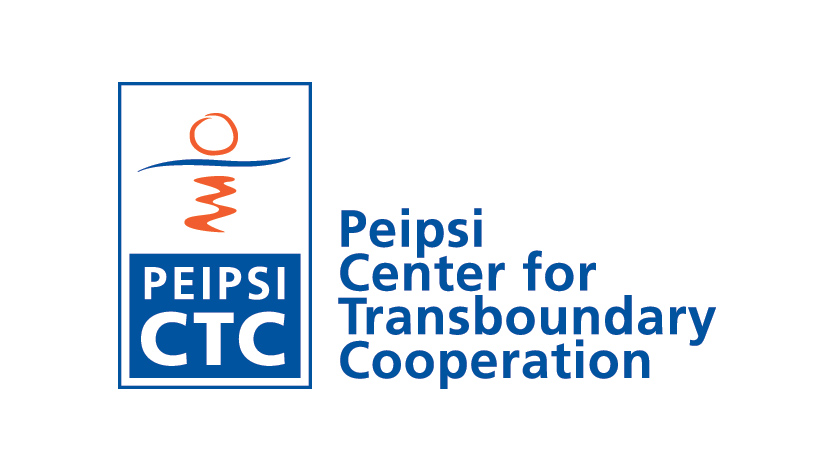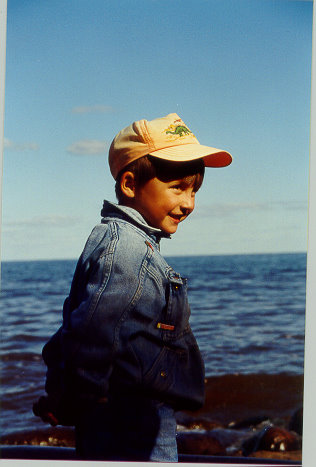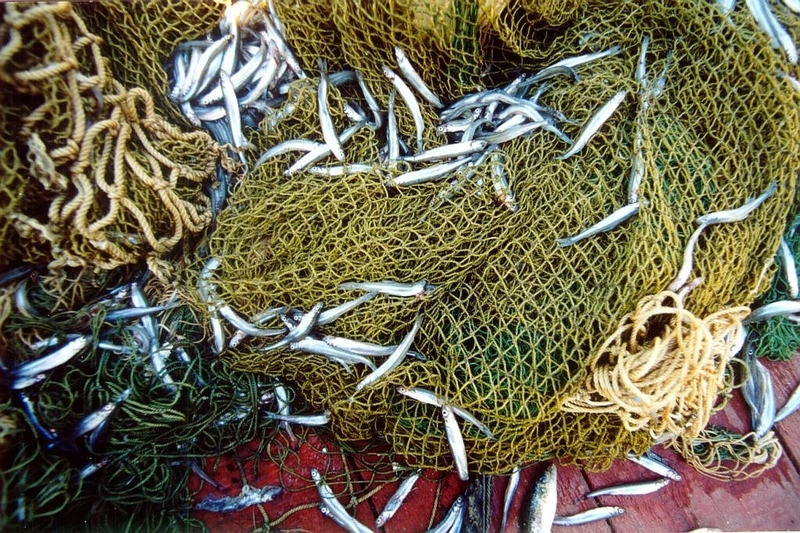- Lake Peipsi is the largest transboundary water body in Europe and the fourth largest lake in Europe (after Lake Ladoga and Lake Onega in Russia, Lake Vänern in Sweden). In some cases Great Saimaa lakes system (Finland) is taken into account and Lake Peipsi is considered to be the fifth largest lake in Europe.
- The area of Lake Peipsi is 3555 km2, of which 44% belongs to the Republic of Estonia and 56% to the Russian Federation.
- Peipsi is a shallow lake, its average depth is 7.1 m and maximum depth 15.3 m.
- Lake Peipsi (3555 km2) comprises three parts: Lake Peipsi itself - 2611 km2, Lake Pskov (708 km2) and the narrow (the smallest width 3 km) but deep Lake Lämmijärv (236 km2), which connects them. In Lake Lämmijärv lies the deepest place in Peipsi - 15,3 m.
- The volume of the lake is about 25 km3, which is twice as much as the annual runoff of the Estonian rivers. In spring Peipsi's water level can rise by almost a metre. At its highest level the area of the lake increases by 780 km2. In October the level of water is at its lowest.
- Ice cover on Peipsi usually forms at the end of November. It will be thickest, up to 50-60 cm, in the second half of March.
- There are 30 islands in the lake, the biggest - Kolpino - belongs to Russia.
- Lake Peipsi is a eutrophic and biologically highly productive lake. Eutrophication, which is caused by the high nutrient load, is a major threat to water quality in the lake; fortunately, the recent years have shown a tendency for the better.
- The Peipsi basin forms 85% of the Narva-Peipsi watershed (56 225 km2), which is 47 814 km2. 59% of the Lake Peipsi basin lies on the territory of Pskov Oblast, 34% on the Estonian territory and 7% in Latvia (A. Jaani et al, 1998).
Lake Peipsi Region
Although Lake Peipsi is very large and its shoreline hundreds of kilometers long, this water body is of marginal importance for Estonians. Even for those who live near the lake, it seems to be somewhere far away, where people do not go very often.
The way of life of the old-believers who live at the lake and the specific local villages create a unique landscape, which cannot be found anywhere else. Houses lie tightly next to each other and the village-street runs along the shore of the lake, forming villages that are several kilometers long. Vast onion fields surround the villages.
When ice breaks on the lake in spring, almost every year reckless fishermen end up drifting on the blocks of ice.
The sandy beaches of the northern shore of the lake are at least as long as the villages of Old Believers. Of these Kauksi is the one that everybody has heard about. The horizon disappears into the water like at the seaside, but the comfortably shallow and sandy bed of the lake and warm water are even better than the sea.
The Lake Peipsi region or area comprises several possible definitions because there is no universally accepted understanding of the term "Lake Peipsi region". We suggest two possible approaches.
The Big Peipsi Area on the Estonian side consists of four counties and on the Russian side five districts at the lake. However, this definition is more abstract than connected to everyday life at the lake.
The Small Peipsi Area (Peipsi region in its narrower sense) would be the parishes that lie directly on the shore of the lake both on the Estonian and Russian side. The Small Peipsi Area has no strictly defined territory: it is a matter of perception rather than an administrative term. Likewise, the Small Peipsi Area in this form is not registered in any statistical records.
It is obvious that these two areas differ greatly and that the region's main development possibilities lie in bigger centres like Tartu, Narva and Pskov. At the same time the development of these centres also affects the Small Peipsi Area either directly or indirectly.
The Lake Peipsi region is characterised by old settlements; for centuries different cultures, nationalities and ethnic groups have lived together here. Fishing, farming, handicraft and trading have traditionally been the sources of livelihood for the local people.
The towns of Tartu and Narva in Estonia and Kingissepp and Pskov in Russia are the biggest centres of this region, although it is quite clear that Tartu and Pskov are the "capitals" of the region. This concerns not only the geographical position of these towns, but also their importance in regard to the economy, transport, cross-border co-operation and many other aspects of life.
On the Estonian side four counties border on the lake - Ida-Viru County, Jõgeva County, Tartu County and Põlva County, whose territory is altogether 11,224 km2 or one fourth of the Estonian territory. Its total population is 444 500, which also forms about one fourth of the Estonian population (Nordregio 2000). 20 parishes border directly on the lake; their territory is 3,600 km2 and population 30,800. Such a "Peipsi County" would be the third largest county in Estonia. Conversely, only the population of Hiiumaa County would be smaller than the one of "Peipsi County".
On the Russian side Leningrad and Pskov Oblasts share the lake region. In Leningrad Oblast 3 administrative units border on the lake: the town of Ivangorod, Slantsy and Kingissepp districts. In Pskov Oblast the Pskov town and Gdov, Pechory and Pskov districts border on the lake. Altogether the region on the Russian side is 13,212 km2, with a population of 421,400, of which 325,000 or 77% live in towns. Of the 37 parishes in Gdov, Pechory and Pskov districts 17 border on the lake.
The areas bordering on the lake (the Small Peipsi Area) have a centuries long tradition of co-existing and mixing cultures and religions.
The Russian-speaking population on the western and northern shore of the lake is a peculiar ethnic group, which consists of descendants of Russian emigrants of different backgrounds and religious beliefs, mainly serfs and old-believers who fled Russia to escape the persecution of the Orthodox Church. The oldest congregation of old-believers on the Estonian territory is in Väike-Kolkja (established in 1710). At the end of the 18th century Russians probably accounted for up until one quarter of the total population at the lake. They were skillful and experienced fishermen, artisans and vegetable-growers. The peculiarities of the natural environment (poor soil, forests and the lake that is rich in fish) and cultural traditions have shaped the characteristic material culture of the region. In the 19th century the rise of farming and townies brought about an increased demand for builders and extended the vegetable market. As a result, Russian villages emerged at the "neck" of Lake Peipsi and long-term relationships were established with the Estonians living in the neighbourhood and Russians on the eastern shore of the lake. Growing cucumbers gained momentum in the 1920s. Fishing has always been an important activity for the Russians at the lake. Today there are about 11 congregations of old-believers in Estonia with a total of 10,000 members, which mainly lie in areas at Lake Peipsi but also in Tartu and Tallinn.
The second clearly definable ethnic group in the region is the Setus (13,000 people), who primarily live in Southeast Estonia in Põlva and Võru Counties and in Pskov Oblast in the county of Pechory. The characteristic feature of the Setus is their dialect and the fact that the majority of them belong to the Russian Orthodox religion, while most of the Estonians are Lutheran.
The biggest towns of the region (population on 01.01.2012) are Tartu (98 522), Narva (64 057), Põlva (6200), Jõgeva (6349), Räpina (2546), Mustvee (1555) and Kallaste (999).
On the Russian side 94% of the population at the lake are Russians. Of other ethnic groups Ukrainians and Belarus should be mentioned, also Estonians and Setus (in Pechory district), Estonians and Latvians (in Gdov district), Izorians and Ingermanland Finns (in Kingissepp district). Setus form a compact ethnic group in Pechory district.
Compared to the Leningrad and Pskov Oblasts as a whole, the level of education of people living at the lake is higher. Even in the countryside there are many people here who have university or secondary education. The reasons are firstly, good connections with Pskov and St. Petersburg and the great share of immigrants in the population structure. Secondly, the number of people employed in the agricultural sector is small and the number of civil servants high.
The only city of the region is Pskov (201,400 people). The other towns are considerably smaller: Kingissepp 52,500, Slantsy 39,900, Pechory 13,700, Ivangorod 11,900 and Gdov 5,700 people.
People. Author: Peeter Unt, Margit Säre
















